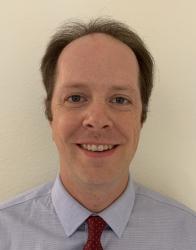Sometimes God works and speaks to people in mysterious ways. At other times, He is as blunt and obvious as a slap in the face. The recent Asbury revival in Wilmore, Kentucky, qualifies as an example of the latter.
From February 8 to 19, thousands of souls joined in prayer with the students and faculty at Asbury University, a small Christian school in Wilmore, Kentucky. What began as a typical chapel service transformed into a 13-day prayer event that drew attention from popular Christian media figures and countries as far off as Brazil, Singapore, and Finland, and has garnered over 100 million views on TikTok. Even though school leaders finally ended the prayer service due to crowding issues, other schools have gone on to have their own versions to keep the flame going.
By all accounts, the Asbury revival was much more than a spontaneous gathering in the style of Woodstock, as the headline in the New York Times would have it, but was instead a truly miraculous experience. Many of the people who participated claimed to be moved by the Holy Spirit. Even among a throng of strangers singing praise and worship music, individuals reported being peacefully transported into a higher realm. People ridden with stress suddenly felt serenity and joy. It’s notable that there was really nothing there that would otherwise bring together such a large crowd for so long—no celebrities, no huge giveaways, no drugs.
Naturally, people have differing interpretations of the “revival.” Some characterized it as a mass release of all the built-up tension of Gen Z, which suffers from record levels of anxiety and alienation, apparently. Driven crazy by today’s chaotic world, Zoomers have been desperate for some authentic spiritual experience that could offer some catharsis and personal connection. As a director of research at Auburn Seminary told the New York Times: “You have a generation identifying that these are the problems of our generation that are intractable. So many of their friends are not well.” Under this view, the prayer service was nothing much more than a kind of mass therapeutic psychosis.
Other decidedly unspiritual critics saw it mainly as a super-spreader event among a bunch of ignorant Christians. According to the Kentucky Department for Public Health, some participants may have caught the measles from a person who attended the revival. Thus far, there has thankfully been no outbreak. Still, one wonders if these public health schoolmarms would be as willing to lecture people to get vaccinated if the gathering was a Black Lives Matter rally or Democratic fundraising event.
Then there are the religious leaders who have expressed doubts about the Asbury revival, too, questioning whether it was a true “revival” in the full sense of the word or something else altogether. Unlike Christian revivals in the past, the meeting at Asbury was spontaneous and didn’t seem to convey any specific message. Traditionally, most revivals would be coordinated by a firebrand pastor who would “scare the hell out of people” and call on them to repent. Nothing like that was at work at Asbury; on the contrary, people were actively prevented from using the meeting as a platform for any personal agenda.
For Catholics, particularly those of us with a traditionalist bent, it’s difficult to see the Asbury revival as anything more than emotionalist evangelical Protestantism. As fellow Catholic writer and educator Sean Fitzpatrick argues in a recent Crisis article, “We might experience a spiritual high in being slain by the Spirit, but the real test of feeling in faith is the spiritual low when we feel forsaken.” Even if amazing events like that at Asbury or similar Christian revivals move people to think about God again, this means little if the participants do not return to the one true church (i.e., the Catholic Church).
With all due respect to Fitzpatrick, while technically true (at least for Catholics), his argument comes off a tad condescending and pedantic. While I was also turned off by some of the praise and worship songs played at the revival, I can’t deny that something supernatural and genuine was happening there. These weren’t a few kids pulling a stunt, nor some megachurch hosting a feel-good event for people in the suburbs. This seemed much closer to the apostles being touched by tongues of fire on Pentecost. And as far as I can remember, none of them were admonished to not get too emotional or sloppy in their theology. Rather, they were inspired to go and preach the Gospel, even if it meant certain death.
For this reason, I agree with the assessment of a different Catholic writer and educator, Mary Healy, who sees the Asbury revival as something significant for all Christians: “It is as if the Lord, hearing the prayers of so many Catholics desperate for a restoration of faith and life in the midst of a radically secularized age, is giving us a picture of what revival looks like.” To see such a collective outpouring of the Spirit among such people at such a time as today is nothing short of divine intervention. After all, this is the faithless generation that’s been anesthetized by screens and bewitched by TikTok. They are the last people who would fall on their knees and praise God, correct?
And yet they are the ones doing this very thing, to the utter amazement and bewilderment of the rest of us, both as it was happening (as Rod Dreher documents) and a few weeks later. True, we can treat this as a random event where a large group of people released their pent-up angst, or a time where some naive fools idiotically caught the measles while howling at their sky daddy, or an occasion to wag one’s finger at others and tell them go to church and start being reasonable. Or we can treat it as a veritable sign from God to repent and remember our promises to Him and to our children.
Even for the nonbeliever, something important happened at Asbury University. Acknowledging this provides an opportunity to move away from an unsettling and inconsistent materialism to a position of belief and coherence. As writer and podcaster Spencer Klavan wisely states in the conclusion of his recent book How to Save the West: “Given what belief in God entails, a healthy human person should want to believe. In a way, you likely already do.” Ultimately, there’s little point to trying to classify what happened at Asbury. Accepted on its own terms, it should open one’s heart to God and the life of faith. For the individual and the culture at large, there’s very little to lose at this point, and everything to gain.

